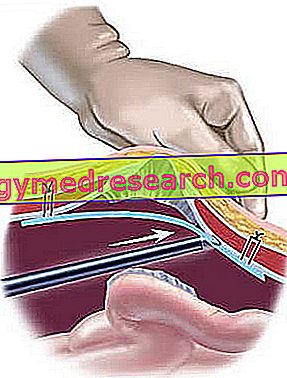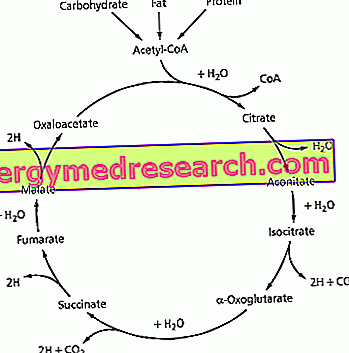What is dyspnea?
Dyspnea is a type of tiring breathing
- which is subjectively perceived as " hunger / need for air " and inadequacy of the breath
is that
- involves an increase in the effort to breathe,
with the consequence of a non-spontaneous muscular effort to make inspiration and expiration.

Types of Dyspnea
Dyspnea can be:
- Accessional : when it occurs suddenly, without a precise regularity, as can happen in asthma, in the closure of the glottis (throat), in the pulmonary edema (presence of fluid in the small respiratory tract);
- From effort : when it occurs during a more or less intense physical activity and is resolved with rest. This occurs for example in some heart diseases or anemia;
- Continue : present constantly. It can be caused by heart failure or severe respiratory failure.
Depending on the phase of the breath in which it is manifested by dyspnea, it may be inspiratory, expiratory or mixed.
Causes of dyspnea
Diseases of respiratory centers : the breath is regulated by groups of neurons that function independently of the control of the subject's will and which are localized, in a structure of the brain called the trunk of the brain, under the cerebral hemispheres.
It can happen, for different reasons, that these neurons get sick, and therefore the respiration is compromised with the appearance of dyspnea. The causes that can damage the respiratory centers are: inflammations, infections, traumas (especially for road accidents), tumors, toxic substances (drugs or drugs based on opium, barbiturates), hypoxia (when little oxygen passes into the blood), hypercapnia ( accumulation of carbon dioxide in the blood).
Impairment of nerve pathways that carry information from the respiratory centers to the effector muscles to :
- multiple sclerosis (neuronal disease of the central nervous system that destroys myelin, a protein that surrounds them);
- amyotrophic lateral sclerosis (which slowly destroys all neurons, both of the central and peripheral nervous system).
Respiratory muscle diseases :
- myasthenia gravis (chronic inflammatory disease that causes weakness of all muscles, including the chest wall).
Chest stiffness, which does not allow him to expand well, for:
- scleroderma (chronic inflammatory disease that affects the internal organs and also the skin, making it hard and not very elastic);
- severe pain due to a broken rib (which limits respiratory movements).
Abdominal volume increase for:
- pregnancy (the growing child goes to compress the diaphragm, which is located above the uterus and which is the main breathing muscle);
- meteorism (gas-filled abdomen);
- ascites (a liquid that forms due to liver diseases such as cirrhosis and hepatitis and which accumulates in the peritoneum, a membrane that surrounds the abdominal viscera).
Obstructive pulmonary diseases, ie from obstructed passage of air in the airways:
- foreign bodies (especially in children who ingest small objects);
- diphtheria (infectious disease that causes inflammation and spasms of the larynx);
- asthma attacks (in which there are spasms of the bronchi and excessive production of mucus);
- chronic bronchitis;
- tumors;
- pulmonary emphysema (a disease in which the septa that separate the alveoli and form large pockets filled with air break, thus remaining incarcerated and struggling to escape from the respiratory system);
- pulmonary edema (presence of fluid that hinders the diffusion of oxygen from the lung to the blood).
Restrictive lung diseases, that is due to an impairment of the whole lung tissue, such as:
- pulmonary fibrosis (replacement of the alveoli with fibrous tissue, not very elastic, therefore not inclined to expand during breathing), mostly due to substances of various kinds inhaled for years in work environments (asbestos, gas, etc.) or as results of severe pneumonia, or radiation;
- pleural effusion (fluid in the pleura);
- pneumothorax (air in the pleura);
- hemothorax (blood in the pleura).
Diseases of the chest wall :
- fibrosis;
- fat accumulation (obese people);
- deformity of the chest wall (from abnormalities of the spine such as scoliosis, kyphosis and lordosis).
Heart disease : they are responsible for what is called cardiogenic dyspnea. The difficulty in breathing in those suffering from heart is due to the fact that this organ, when strongly compromised by various diseases such as heart attacks, valve alterations, heart failure or dilatation, pumps less blood in the aorta because it has lost its "strength" .
As a result the blood accumulates upstream of the left heart, in the pulmonary veins. If this accumulation is large, great pressure builds up in the same veins which can cause the liquid to escape from the vessels. This goes to compress the small airways and can, in the most serious cases, also enter the alveoli, giving what is called pulmonary edema, a very serious condition that prevents the passage of oxygen and carbon dioxide from the alveolus to the blood and vice versa, and that should be treated urgently because it can lead to death in no time. There are different degrees of cardiogenic dyspnea:
- class I: when the patient has no "air hunger" but has a documented heart disease that could soon cause it;
- class II: when he has no symptoms at rest but appears to him making efforts of high intensity;
- class III: when dyspnea appears for light intensity efforts;
- class IV: when dyspnea is present even at rest.
Blood diseases that alter the composition:
Psychological and psychiatric causes in patients suffering from neurosis, anxiety, distress, depression.
Dyspnea Treatment »



